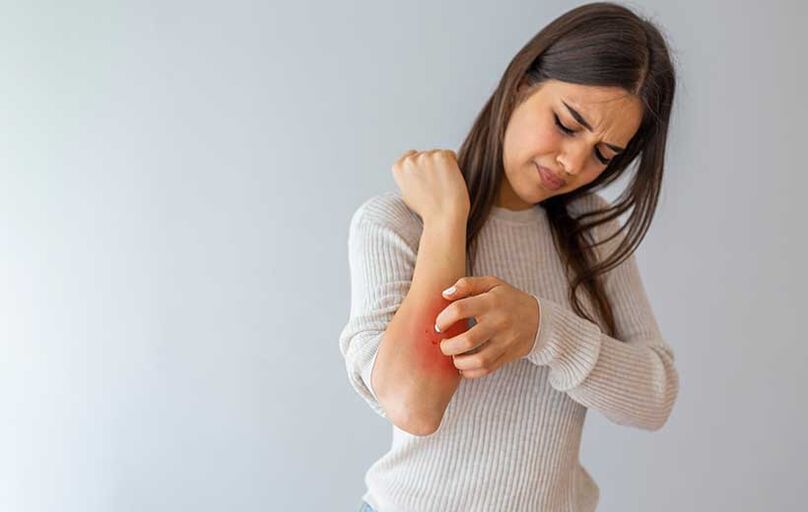
causes of psoriasis
- Neurogenic (rash after stress, burns, trauma);
- endocrinology (especially perimenopause);
- metabolism (lipodystrophy);
- contagious;
- Viruses (psoriasis antigens are isolated from individuals who are healthy but have a high likelihood of developing psoriasis in the future, a non-communicable disease);
- genetics.
- Infectious and parasitic diseases, including carrier diseases (HIV, tonsillitis, dental caries, hepatitis);
- pressure;
- obesity;
- perimenopause;
- Medications (interferons, beta-adrenoceptor antagonists, ACE antagonists, NSAIDs);
- Bad habits (alcohol, smoking, household chemicals);
- Skin damage; dryness, leading to increased skin trauma.
clinical classification
- vulgar (ordinary);
- exudative;
- psoriatic erythroderma;
- Arthropathy;
- Psoriasis of the palms and soles of the feet;
- Pustular psoriasis.
- They can get sick at any age; cases of psoriasis are not uncommon in children;
- Men and women are affected in equal proportions;
- Popular worldwide;
- Exacerbations are summer, winter and mixed seasonal.
Symptoms of psoriasis
- Symptoms of stearin stains - increased number of scales when scratched;
- Psoriasis membrane phenomenon - when all the scales are scraped off, a smooth, shiny red surface appears;
- Symptoms of needle bleeding - drops of blood that appear when the film is scratched. This is due to uneven elongation of the dermal papilla, telangiectasias, and their swelling.
signs of psoriasis
- Psoriasis on the body can start as a single spot and then coalesce into large lesions.
- Psoriasis on the hands is usually localized to the extensor surface.
- Facial psoriasis - The rash usually appears behind the ears and on the forehead. It is an independent factor that enhances treatment.
- Psoriasis on the scalp is an isolated form that does not affect the hair, with elements of the rash located at the edges of the hair, known as the "psoriasis crown. "
- Nail psoriasis - causes characteristic changes where the tips of the nails are sunken and the nails look like thimbles. It may also thicken, darken, or form yellow spots under the nails.
- Psoriatic arthritis - affects surrounding joints with or without pain, often with inflammation of where ligaments attach to bones, the ligaments themselves, and the fingers.
Characteristics of psoriasis in children
- Progressive - the rash becomes more complex and uniformly white in color with a narrow red edge;
- Quiescent - the spots stop growing and a 2-5 mm wide band of pale skin appears at the edge;
- The catagen phase - the scales gradually fall off and the spots reduce and disappear. Depigmented spots remain at the rash site.
Diagnosis of psoriasis
- General blood tests (including white blood cell count, ESR, platelets);
- General urinalysis;
- Biochemical analysis (ALT, AST, urea, uric acid, cholesterol, triglycerides, bilirubin, glucose, total protein, CRP, rheumatoid factor);
- In difficult cases, perform a skin biopsy and perform further histopathological examination (marked acanthosis, parakeratosis, spongiosis and accumulation of leukocytes in the form of accumulations of 4-6 or more elements);
- Test for HIV, viral hepatitis B and C, and tuberculosis before starting biologic therapy;
- Radiographic examination of affected joints;
- CT and MRI of axial lesions;
- Electrocardiogram.
psoriasis treatment
- Ointments and creams containing vitamin D3 and its analogues;
- Calcineurin inhibitors;
- topical corticosteroids;
- Phototherapy.
- PUVA therapy;
- Cytostatic;
- immunosuppressants;
- Biological drugs.
- nonsteroidal anti-inflammatory drugs;
- disease-modifying drugs;
- Intra-articular injection of corticosteroids;
- Biological drugs.
- continuous mode;
- tandem treatment model;
- Step-down treatment regimen;
- Step application mode.
- Areas of skin that affect aesthetic appearance;
- Large areas of the head are affected;
- External genitalia are affected;
- The palms of the hands and soles of the feet are affected;
- At least 2 nails are affected;
- Some single elements cannot be processed locally.
- Minimize skin trauma and dryness;
- After applying psoriasis creams and ointments to your hands, wear gloves to prevent them from getting into your eyes;
- Use sunscreen with a protection factor of 30;
- Avoid stressful situations and consult a psychologist if necessary;
- Control your weight and eat properly.
psoriasis diet
- 1200-1600 ml of alkaline drinks per day;
- Use lecithin;
- vegetables and fruits;
- porridge;
- lean meats and fish;
- Dairy products.
- Tangerine;
- Bread made from high-quality flour;
- fatty fish and meat;
- high-fat dairy products;
- Coffee - no more than 3 cups per day;
- Products containing yeast;
- Wine, sweets, pickled, smoked, spicy.























